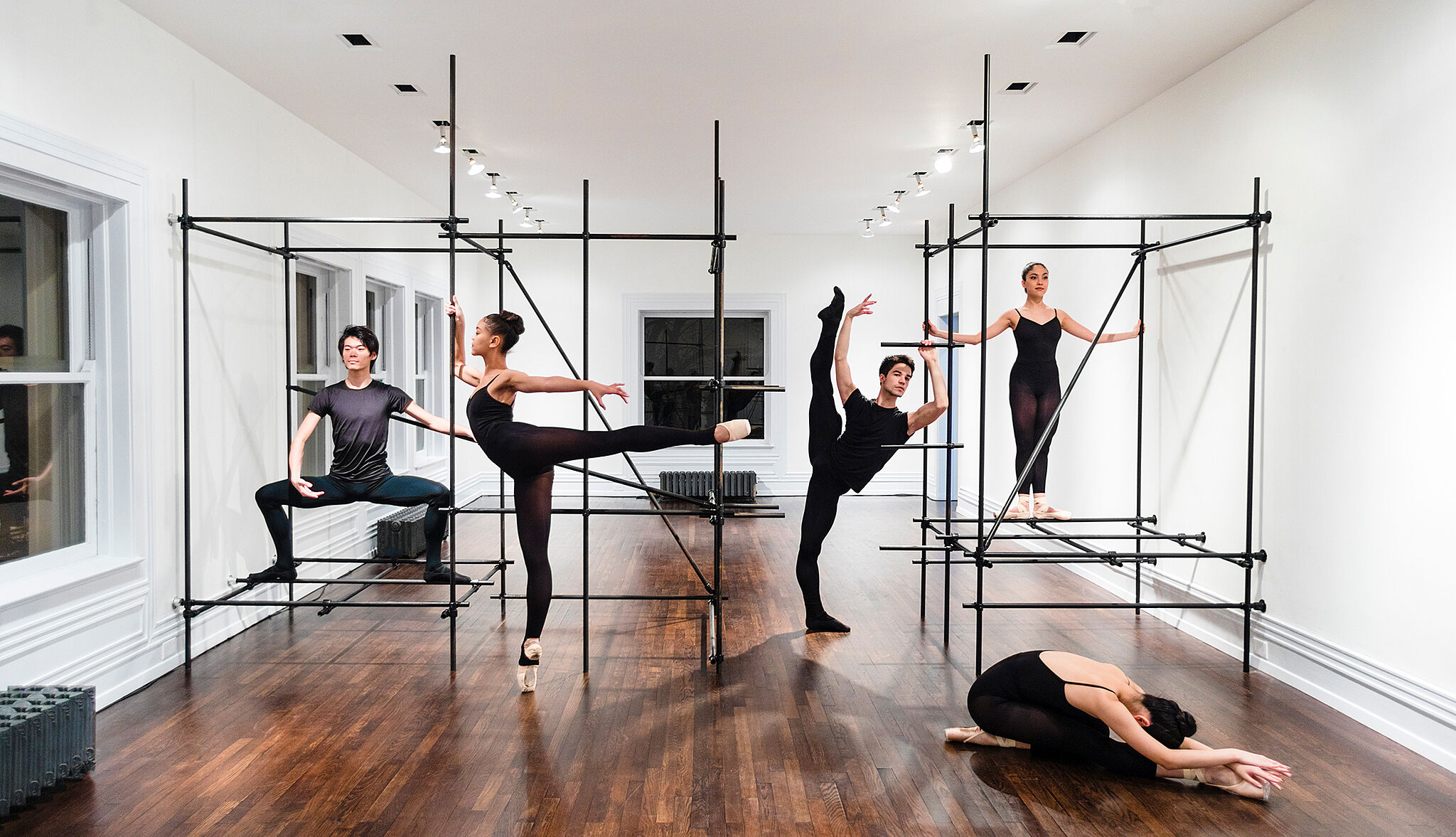Whitney Biennial 2019 | Art & Artists
May 17–Oct 27, 2019
Whitney Biennial 2019 | Art & Artists
Brendan Fernandes
19
Floor 5
Performance Dates
Select Fridays, Saturdays, and Sundays
Learn more.
Born 1979 in Nairobi, Kenya
Lives in Chicago, IL
Brendan Fernandes’s installation explores the dynamics of mastery and discipline as embodied by ballet. The sculptural installation—comprising five structures that he calls “devices,” ten hanging ropes, and a central cage—is animated at times by a group of dancers. Both assisting and encumbering the performers, the minimalist objects enable poses that test their endurance in overt displays of physical tension and self-control. Even while it may confine them, the structure also offers the dancers a space in which to rest and stretch. Fernandes has likened the project to S&M culture, noting that each places “an emphasis on trust and confidence within a space where roles of mastery and submission are in play.”
Costumes: Johanna Davenport Calica
Dancers:
Hector Cerna
Tiffany Em
Charles Gowin
Violetta Komyshan
Josep Maria Monreal Vidal
Amy Saunder
Mauricio Vera
Allison Walsh
Jennifer Whalen
Tyler Zydel
The Master and Form, 2018
-
0:00
Brendan Fernandes
0:00
Brendan Fernandes: Hi, my name is Brendan Fernandes. I'm a visual artist. I work between the intersections of dance, and sculpture, and performance.
Narrator: Fernandes’s contribution to the Biennial is a group of structures that can stand on their own as sculptures, but also serve as sites for performance.
Brendan Fernandes: Coming from a dance background—dance training through ballet—I have created devices that put dancers into specific positions, forms indicative of the technique of ballet.
There's five devices, five dancers, and they will each have a device assigned to them. They'll stay in the device for as long as they can. At certain moments, they are given a cue to leave the device, and in the center of the installation is a large, cage-like device. Something that seems daunting, something that seems austere, but for me, this dungeon kind of space becomes a space of freedom and sanctuary. A safe space for them to release their bodies.
As a former dancer, training in the ballet world, I've always been questioning my body, my sense of who I was in that world. Ballet is a very specific type of dance form, and specific types of bodies are require to perform the gestures, or to be quote-unquote technically successful in that space.
I think about race, class, gender, through ballet. Those things are very much set through western hegemony narratives. Part of what I'm doing in this work is to be critical and to break down those binaries, because we are in a space that we need to change that, and dance needs that so much in its narrative, to think about things differently.
-

